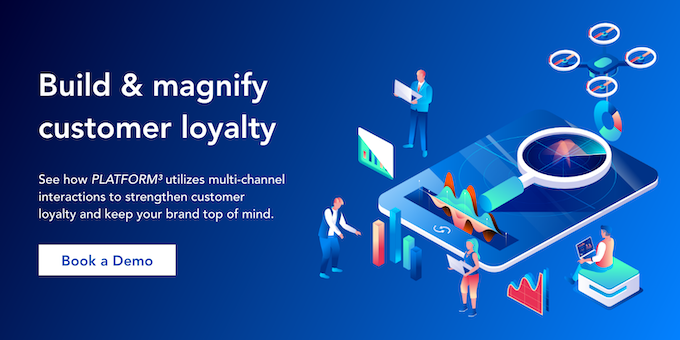How Do Loyalty Programs Increase Sales?
Whether it’s Starbucks’ Rewards program or Amazon Prime, we’ve all engaged with loyalty programs from various brands at some point in our lives. Loyalty programs help businesses drive purchases and sales through building relationships with their customers while establishing customer loyalty. The key factor in an effective loyalty program is its mutually beneficial nature, where both the brands and their customers gain value out of it. For the brands, it helps with retaining existing customers and increasing the customer lifetime value. For the customers, they are rewarded for shopping with the brand.
In today’s digital era, businesses have found new ways to grow their customer base without massive investments into traditional forms of advertising. Instead, word-of-mouth recommendations have become one of the key drivers of growing and retaining customers. Here are 15 customer loyalty statistics highlighting how loyalty programs can help your brand increase sales.
Top 15 Customer Loyalty Statistics
1. Consumers who participate in high-performing loyalty programs (programs that have positively changed respondent’s behaviors and overall satisfaction) are 80% more likely to choose the brand over competitors and twice as likely to recommend the brand to their friends. [source]
2. Consumers who engage in high-performing loyalty programs are twice as likely to increase their frequency of purchases. [source]
3. Consumers who engage in high-performing loyalty programs are 78% more likely to pay higher premiums just to stay with a brand. [source]
4. Consumers in paid loyalty programs are 62% more likely to spend more on the brand and 59% more likely to choose the brand over competitors. [source]
5. Research shows a 60-70% probability of selling to existing consumers compared to a low 5-20% probability of selling a product to new customers. [source]
6. 58.7% of internet users worldwide stated that earning rewards or loyalty points was one of the most valued aspects of their retail shopping experience. [source]
7. 69% of consumers in the U.S. reported that customer service is “very important” in their choice of or loyalty to a brand. [source]
8. 58% of consumers would switch half or more of their spending to a provider that excels at personalizing experiences without compromising trust. [source]
9. 58% of U.S. consumers stated that they would have to have “really bad” experiences with a brand to discontinue their engagement. [source]
10. 77% of consumers said that they had held relationships with specific brands for 10 or more years. This applies to 60% of millennials, despite their relatively young age. [source]
11. A 10% increase in customer retention yields a 30% rise in the value of the company. [source]
12. 75% of consumers in the U.S. indicated that they want to be rewarded for things like watching a brand video or taking a survey. [source]
13. 40% of millennials in the U.S. prefer loyalty programs with interactive games, highlighting the importance of creating engaging and meaningful customer experiences. [source]
14. 37% of consumers consider themselves loyal to the brand after five or more purchases. [source]
15. 74% of millennials will switch to a different retailer if they receive poor customer service. While, for gen X and baby boomer consumers, 86% and 85% respectively would switch immediately due to poor customer service. [source]
Key takeaways
The statistics reinforce what we see happening in today’s digital era of shopping. Consumers have unlimited access to information that can influence their decision-making, which this vast information access can work against businesses that advertise disingenuously. Word-of-mouth marketing is one of the most effective ways to persuade consumers’ purchasing decisions, so companies now need to try even harder to meet their consumers’ needs.
The quality of the product, service, and overall shopping experience is crucial in today’s consumer landscape. As the number of quality competitors rises, businesses need to find innovative ways to stay on top of the game. The statistics show that consumers are receptive to loyalty programs, and even prefer those that incorporate engaging elements.
With the cost of acquiring new customers becoming increasingly more expensive, you’ll want to consider incorporating marketing efforts that can help customer retention, like loyalty programs.
Need help creating a loyalty program?
High-performing loyalty programs are the ones that get results. However, there are a variety of factors that need to be considered to create an effective program. Our next-generation shopper marketing platform, PLATFORM³, has allowed the most valuable brands to build and launch their loyalty programs. We will help you throughout the whole process, from initial strategic planning, through to development and overall program management. PLATFORM³ provides invaluable customer data reporting and analytics, which can help you make informed business decisions. One key component of an effective loyalty program is the consumer’s experience. So here at 3 tier logic, we have a dedicated customer support team that can help manage and troubleshoot customer inquiries. To learn more, book a demo with our team today.

